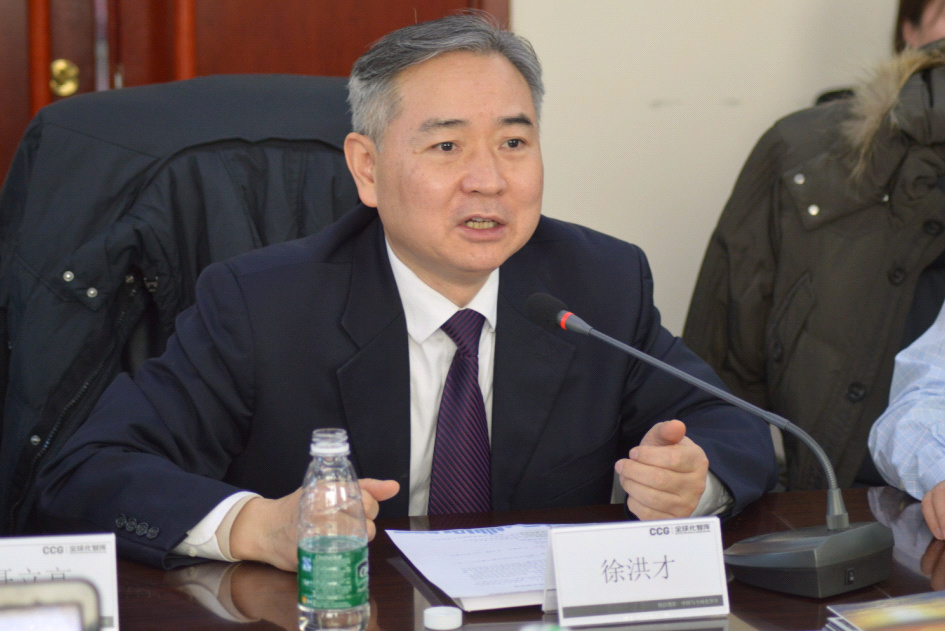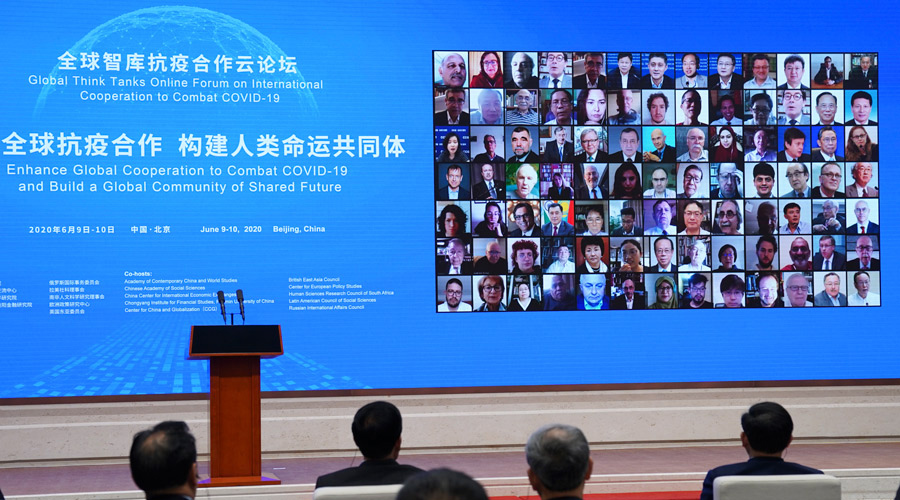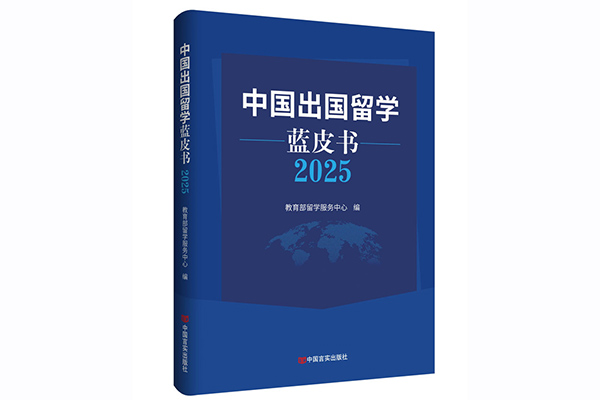Xu Hongcai: Sino-US relations & China’s role in world economy
China-US relations and China’s role in the sustainable development of world economy
Xu Hongcai
Deputy Chief Economist
China Center for International Economic Exchanges
In London School of Economics and Political Science,
On February 23

Xu Hongcai, a Non-Resident senior research fellow at the Center for China and Globalization(CCG).
Ladies and gentlemen, good morning!
It is a great honor for me to be in London, in front of you, so many young friends, to attend the LSE SU China Development Forum 2019. I remember Chairman Mao said, you are like the morning sun at eight or nine, the world is yours and ours, but it is yours after all. Today, I am much delighted to share my points with you on China-US relations and China’s role in the sustainable development of world economy.
Since last year, a drastic change has occurred. The growth momentum of global economy was strong in the first half of 2018, but it slowed down in the second half of the year. In my view, the slowdown will continue over the next two years. The IMF cut its forecast for world economic growth in 2019 to 3.5%, compared with 3.7% last year. The USA’s economy is expected to grow 2.5 percent this year, compared with 2.9 percent last year. At the same time, the IMF also lowered the expected growth in Europe, Japan, emerging economies and developing countries. Looking back to 2018, “black swan” events took place frequently worldwide. The economic policies of the major economies changed a lot. The international oil price, the stock market, and foreign exchange market quaked dramatically. Global foreign direct investment was shrinking. Global trade growth was slowing. Some famous multinational companies experienced a sharp decline in performance, causing investors suffered huge losses.
In particular, last March, President Trump unilaterally triggered trade conflict between China and the United States. Generally speaking, China responded rationally and positively. China has focused on expanding its opening up and deepening its reforms, also responding to the US appeal. Nevertheless, the negotiations did not go well. At the end of 2018, the situation changed dramatically: the three major stock indexes fluctuated sharply, and the US economy was expected to slow down in 2019. The Federal Reserve had hesitated to raise interest rates. The US government is now heavily indebted, and the conflict between its government and Congress has intensified. The imposition of tariffs by the United States on China’s exports has actually led to a larger trade imbalance, indicating that Trump’s therapy does not work. The negative impact on the U.S. economy has emerged, with rising costs of American firms for production and residents’ living.
Sino-US trade conflict has a negative impact on investors’ confidence, causing volatility in China’s stock market. However, China’s foreign trade volume, FDI and ODI have maintained steady growth. This indicates that China has achieved positive results in deepening reform, which also has been recognized by foreign investors. Besides, the World Bank has given a higher rating to the business environment in China. In fact, two sides eagerly hope to end the trade frictions. China has been trying to push forward with “addition” approach and is committed to making “big cakes” by further opening its service sector and increasing imports from the United States, such as oil, gas and soybeans. The US side has previously implemented unilateralism, reducing China’s exports to the United States by raising tariffs. This is actually doing “subtraction”. There is a significant difference between Chinese and American philosophy.
In the past year, China and the US held seven rounds of high-level economic and trade consultations. Now the two sides are increasingly aware of the high degree of their economic interdependence. The total trade volume between two countries over the past year reached $630 billion, and bilateral investment was more than 240 billion U.S. dollars in total. Such a substantial trade volume could not have been achieved without business rules and market principles. In this context, the integration and dependence of the industrial chain should not be fiercely broken. However, the US side has taken an inappropriate punishment to some of China’s high-tech companies, which hurts not only Chinese enterprises, but also the United States electronic component suppliers. This has definitely damaged the both sides. U.S. Apple stock fell sharply at the end of last year, leading to Warren Buffett’s massive loss. I have the confidence that the trade frictions between China and the United States will end soon. But for the long term, the two should solve the problem through equal consultation, further opening up and enhanced cooperation, then to achieve mutual benefit and a win-win result.
Faced with complicated international context in 2018, China’s economy as a whole has remained stable and progressive. There are several landmark economic indicators: the GDP exceeded 90 trillion Yuan for the first time; the per capita income reached 10,000 US dollars for the first time; the volume of foreign trade exceeded 30 trillion Yuan for the first time; and the foreign exchange reserves remained above 3 trillion US dollars. These achievements are indeed hard-won. Last year, China’s GDP grew by 6.6%, but it also showed a declining trend quarter by quarter. Even so, China has still contributed about 30 percent of the world’s new GDP growth and remained a veritable engine of world economic growth. China’s economy has made steady progress and shown signs of improvement in five aspects as follows.
First, the economic growth rate was within a reasonable range. It is expected that China’s GDP will grow by 6.3% this year and by more than 6.0% in 2020. So, it will be a high probability event for China to complete the building of a well-off society in all respects by 2020. Second, inflation was stable. The consumer price index (CPI) grew by an average of 2.1% in 2018; and the residents’ income growth was roughly in line with economic growth. Third, the employment situation was good, with 13 million urban jobs created for six consecutive years. Fourth, the international balance of payments has reached the basic equilibrium. The trade surplus has narrowed, and there has been no large-scale capital outflow. Both FDI and outward direct investment have maintained steady growth, and the RMB exchange rate has remained relatively stable at a reasonable and balanced level. Fifth, we made positive progress in supply-side structural reform, improved the economic structure and raised the quality and efficiency of development. Investment structure was optimized with investment in environmental protection and agriculture increasing by 43.0% and 15.4% respectively in 2018. The added value of the tertiary industry accounted for 52.2% of GDP and contributed 59.7% to GDP growth. Consumption as the main driving force of economic growth was consolidated, and the final consumption expenditure contributed 76.2% to GDP, 18.6 percentage points higher than that of the previous year. China made solid progress in pursuing green development, and energy consumption per 10,000 Yuan of GDP decreased by 3.1 percent over the previous year.
However, China’s economy also faces new challenges. World economic growth will slow down in the coming years, and the economic policies of the United States, Europe, and other major economies are full of uncertainties. With the prevalence of protectionism, populism, and unilateralism, the multilateral trading system with WTO as the core and the global governance are facing unprecedented challenges. In recent years, China’s foreign trade surplus has narrowed year by year. In 2018, China’s foreign trade surplus hit a record low with only $350 billion and will keep declining in the future. More importantly, the principal contradiction in Chinese society has been transformed into one between the people’s ever-growing need for a better life and unbalanced and inadequate development. With the increase in labor costs and the improvement of environmental protection standards, some low-end manufacturing industries have begun to migrate to neighboring countries. Investment growth is also weak, and it is difficult to keep relying on expanding investment to drive economic growth. At the same time, the growth of household consumption is not strong. High housing prices in first-tier cities have squeezed consumer spending. The growth of traditional consumption, such as in housing and automobile, was weak, while the growth of emerging consumption, such as tourism, culture, information, pension, health, and sports consumption, accelerated, but their share on the whole, was low. In recent years, enterprises have significantly increased their investment in research and development. However, it still takes time to cultivate new drivers of economic development. The manufacturing industry is large but not strong, and the overall developing level of science and technology is still low. In the past few years, although we have kept the bottom line of no systemic financial risks and generally maintained financial stability, some local financial risks have inevitably emerged, such as the collapse of P2P platforms, default of corporate bonds and volatility of stock market, which have had a negative impact on the real economy.
At the beginning of the New Year, we feel the uncertainty from the outside world while starting a new round of reform and innovation. Basically, there are some favorable conditions as follows. China has kept political stability, and policy continuity and flexibility. Domestic demand is relatively stable, and the market is enormous. With the growth of per capita income, resident’s demand for diversified consumption increases. The role of innovation in driving economic growth is rising, and technological progress and industrial restructuring are gaining momentum. Consumption has become the main driving force for economic growth. Moreover, the dividends of a new round of deepening reform and opening up will be seen. Not long ago, in response to changes in the international and domestic situation, China’s top policymakers have made new adjustments to its economic policies, which are expected to form a synergy.
The first is a proactive fiscal policy. China will cut taxes and fees, including corporate income tax and value-added tax, especially reducing the operating costs of small and micro businesses so that they can carry out their business more efficiently. At the same time, China will create a sound business environment and reduce institutional costs. By the end of 2018, China’s import tariffs had been cut from 9.8 percent to 7.5 percent and will be lowered in the future. China will increase investment in infrastructure to promote connectivity and the free flow of production factors. So, there is a need to expand the issuance of special local government bonds from 1.6 trillion Yuan to 2 trillion Yuan. The fiscal deficit is likely to rise to 3% from 2.6% last year. Second, China will adopt a prudent monetary policy that is in an appropriate level of money supply, preventing violent fluctuations in the financial market, maintaining reasonable and sufficient liquidity, dredging channels for conducting monetary policy, developing multi-tiered capital markets, and preventing and defusing major financial risks. Third, structural reform policies will focus on building and nurturing new system mechanisms. In June 2018, China revised the negative list of market access for foreign-invested enterprises. In December, it released the negative list of market access for domestic enterprises (2018 version). It plans to implement the “one list nationwide” management model in March 2019 and fully implement the management model of pre-establishment national treatment and negative list. Everything that the market can do should be left to the market, and the decisive role of the market in resource allocation should be brought into full play. Meanwhile, the role of the government should be played well to make up for market failure.
In 2019, China will accelerate reform in key areas, especially in the reform of state-owned assets management and state-owned enterprises. China will focus on maintaining and increasing the value of state-owned assets. It will expand the scope for mixed-ownership reform, break the monopoly and encourage competition. In the competitive field, private capital will gradually play a leading role. Incentive mechanisms should be established in state-owned enterprises to mobilize the enthusiasm of entrepreneur and workers. China will not only straighten out the relationship between the central and local governments to establish a modern fiscal and tax system, but also straighten out the relationship between the government and the market to reduce the cost of government operations. Large financial institutions should realize strategic transformation, strengthen internal risk control and improve risk pricing ability, so as to adapt to the trend of comprehensive operation of financial institutions and expand financial openness. China will encourage the development of private banks and other medium- and small-sized financial institutions. Under the premise of controllable risks, China will vigorously develop fin-tech, steadily promote asset securitization, reduce the cost of financial services, and improve the efficiency of financial services for the real economy.
In my opinion, the most promising place for China’s economic development in the next decade is the rural-urban area. China is gradually establishing a mechanism for the two-way and orderly flow of production factors between urban and rural areas, promoting integrated development between urban and rural areas, rural revitalization, and the construction of urban infrastructure. In particular, China should deepen the reform of the land system, increase the application of new technology and improve the rural market system, promote the transformation of agricultural development from a small-scale peasant economy based on families to a modernized agriculture, and promote the development of urbanization by fostering new industries and creating new employment opportunities. With a large number of farmers turned into citizens, the consumption growth of Chinese residents has great potential.
Looking into 2019, the difficulties in the first quarter may be enormous, but China’s economy is projected to be stabilized in the second half of the year. It is expected that the annual economic growth rate will remain between 6.0% and 6.5%, and the CPI rise will be around 2.2%. 13 million new urban jobs will be created. Investment in fixed assets is expected to grow by about 6.5 percent and total retailing of social consuming goods by about 8.5 percent. The growth of imports and exports will slow down, and the trade surplus will narrow to about $300 billion US dollar. However, the trade structure tends to be optimized, and the competitiveness of foreign trade enterprises will be enhanced. China will adopt a more proactive fiscal policy, cutting taxes and fees by about 2 trillion Yuan and expanding infrastructure investment by the same amount. Monetary policy will be slightly loose at the margin. M2, the broad money, will grow by about 9.0%. RMB loans will grow by about 10%, and the nominal interest rate will remain unchanged. By the end of 2019, the dollar-RMB exchange rate will remain within 7.0. In general, China’s economy will continue to grow steadily in the future.
In 2013, Chinese President Xi Jinping raised the Belt and Road Initiative, providing an open cooperation platform for the international community. Over more than five years, China has made outstanding contributions to promoting international cooperation along the belt and road based on the principle of “consultation, contribution and shared benefits”, from which more and more participating countries have benefited. At the 2016 G20 summit in Hangzhou, China made an important mission for G20 members to implement the UN 2030 agenda for sustainable development. It also helped shift the G20 from a short-term mechanism for responding to the financial crisis in the past to a long-term mechanism for promoting sustainable development of the world economy.
Ladies and gentlemen!
Today, the world is also facing severe challenges of unbalanced and inadequate development. The global governance is facing major changes, and the WTO dispute settlement mechanism is paralyzed. It is imperative to speed up the reform of the WTO. It is incumbent on all countries to uphold the authority of the multilateral trading system and play its major role in global economic governance. China will continue to adhere to the basic principles of the WTO, promote the facilitation and liberalization of trade and investment, promote the fairness of rules, promote the reform and improvement of the multi-tiered global governance with the United Nations at the core, build a community of shared future for mankind, and make the international order more just and equitable. For a better tomorrow, let us work together.
Thank you very much.
From CCIEE, 2019-2-28





